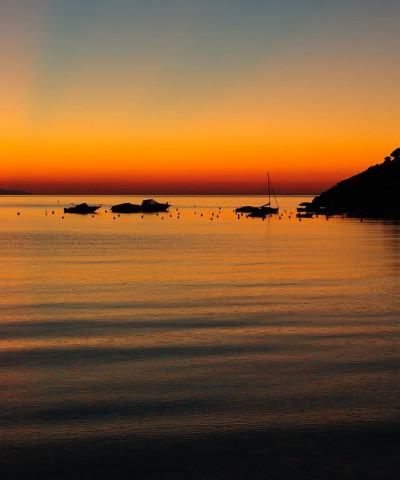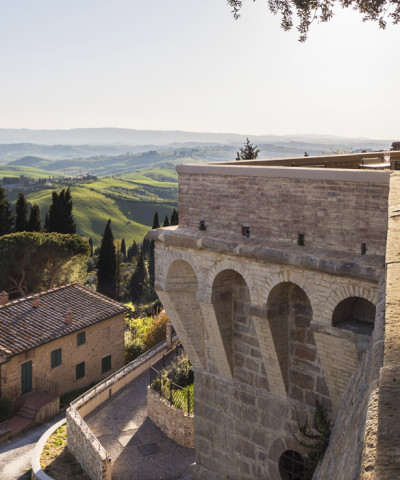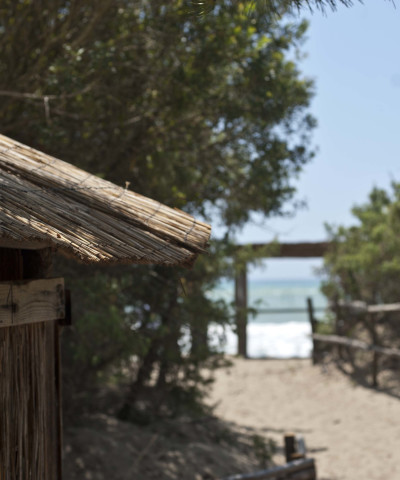The most beautiful beaches on the Tuscan islands
All the coves not to be missed on the Island of Elba, the Island of Giglio and the Island of Capraia
Tuscany is a treasure trove of pearls waiting to be discovered. Its long coasts enclose wild inlets, beautiful beaches, unspoilt landscapes, and also many hidden coves of unusual beauty. The islands are no less impressive either. This is why we want to discover the unmissable gulfs of Elba Island, Capraia and Giglio.
If you are looking for the most beautiful beaches from where to admire the sunset, click here; here are the must-visit restaurants on the Tuscan islands.
A brief itinerary of the island's most beautiful beaches moving from the northwest and arriving south via the east coast.
Cala dei Frati
A small beach located between the Ghiaie beach and the Padulella beach. It faces north, north-east and is well sheltered from winds ranging from the sirocco to the west. The hours of sunshine available are not many, because it is shaded in the morning and goes into shade very early after lunch because of the high promontory above it. On sirocco days, it has nothing to envy even to Caribbean beaches.
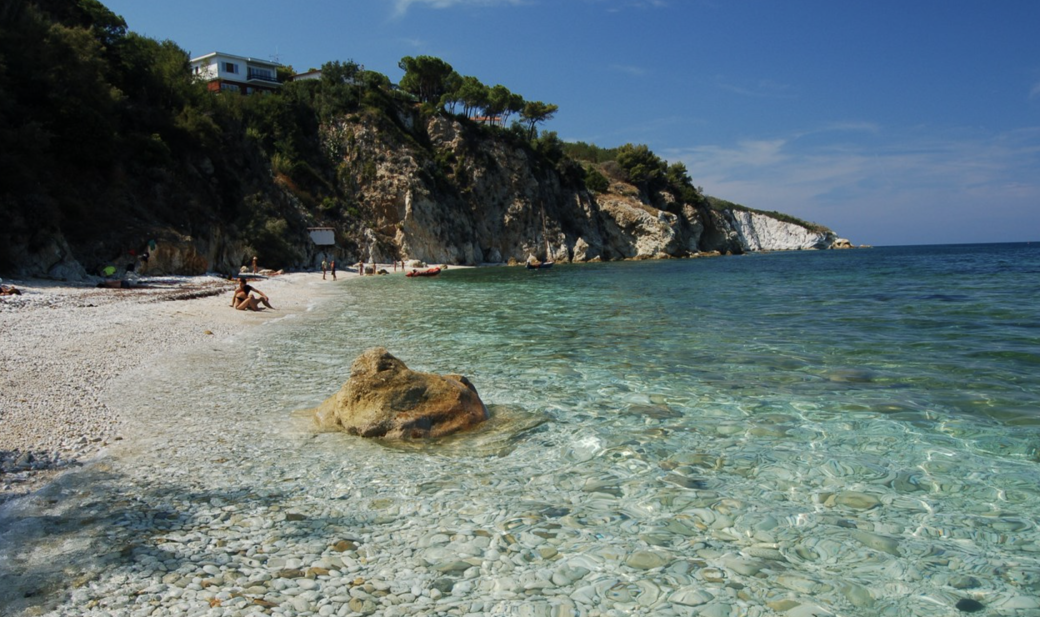 Cala dei Frati
Cala dei FratiLa crocetta beach
A small cove near the centre of Marciana Marina. Immersed in the Mediterranean maquis, this hidden and unexpected pearl of Elba can be reached via a rather steep path characterised by steps carved into the rock, thanks to which it is also called the beach of a hundred steps. The effort is worth the scenery, however, because once you arrive at your destination, you will be greeted by crystal-clear, crystal-clear water and a seabed composed of light-coloured granite stones. A unique and private location for snorkelling or sunbathing.
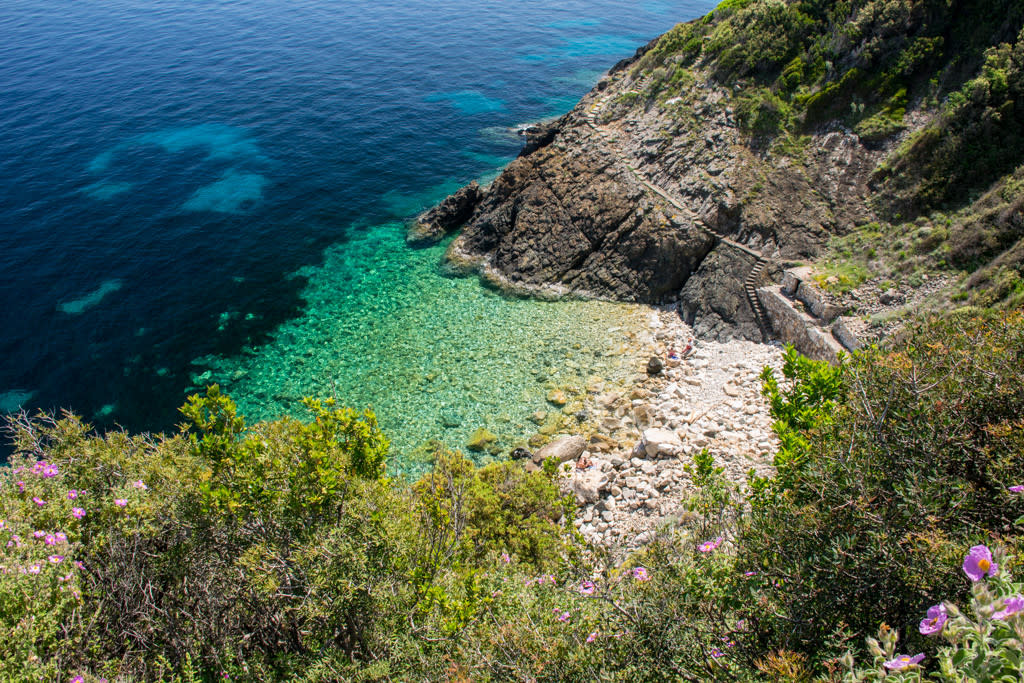 La Crocetta Marciana Marina
La Crocetta Marciana MarinaCapo bianco
This is one of the so-called White Beaches on the north coast of the island, so named because of the stunning natural scenery in which they are set, that of the high, white cliffs that plunge steeply into the sea. It is composed of small white pebbles and, in some places, grainy sand, and the water is crystal clear. With the same characteristics and in the same area you will also find the beaches of Sottobomba, La Sorgente, Padulella and the beach of Sansone.
Acquaviva beach
The name of the beach probably derives from the presence of a ditch, almost always dry in summer, which, with its contributions of gravel and a little sand, has created this pretty lido. The clarity of the sea, its transparencies and hues also make us think that the old inhabitants of Elba, struck by so much beauty and vivacity of colour, also wanted to indicate with this name the characteristics of the sea water. The beach is enclosed in a small gulf and surrounded by rich vegetation that reaches as far as the shore.
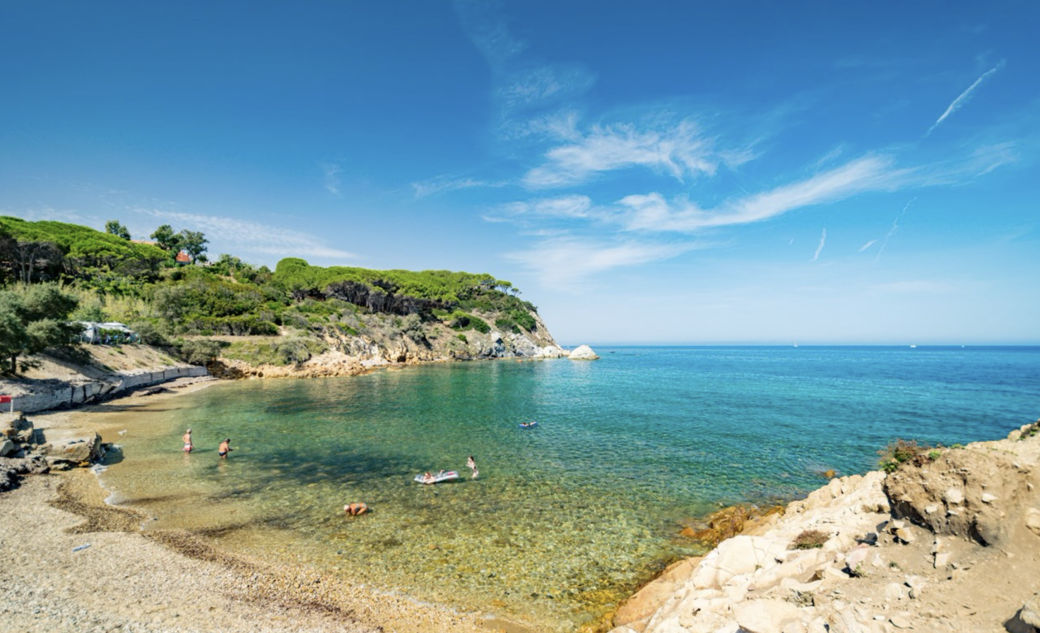 Spiaggia di acquaviva
Spiaggia di acquaviva Caletta di Lamaia
A small, wild cove in the municipality of Marciana Marina that can be easily reached via the 'Sentiero della Salute' that connects it with the nearby Biodola beach. It has an excellent reef that is excellent for snorkelling and, being surrounded by rich vegetation, shade falls on the beach very early in the afternoon. Recommended especially for those seeking peace and relaxation in an unspoilt environment.
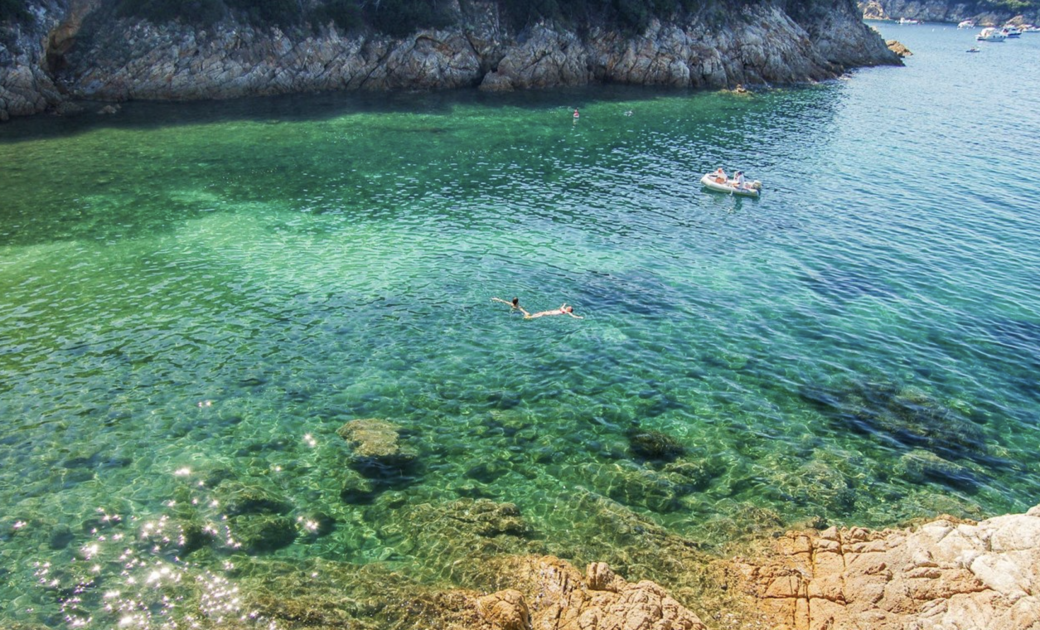 Caletta di Lamaia - Marciana Marina
Caletta di Lamaia - Marciana Marina Cala del Cotoncello
Situated in the same gulf as Sant'Andrea, but exactly on the opposite side, this pale sandy beach opening onto a small inlet is a true pearl of Elba. A bathing 'living room' surrounded by smooth white granite cliffs that offers a corner sheltered from the winds and currents, almost a natural swimming pool, since the water is rarely rippled.
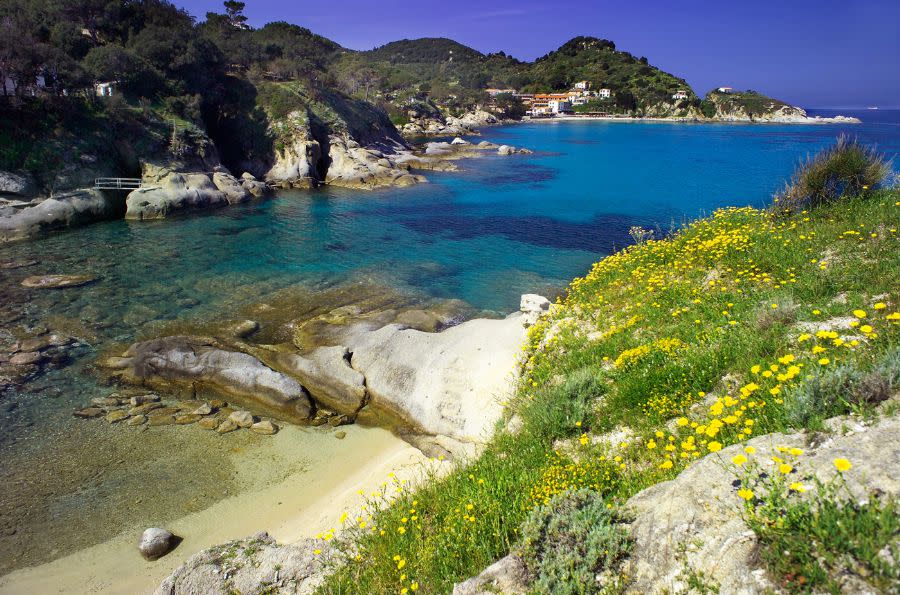 Spiaggia Cotoncello -Marciana Marina
Spiaggia Cotoncello -Marciana MarinaCapo di Sant'Andrea
Another beautiful White Beach, located northeast of the island, with an almost exotic charm. The white color of its sand is due to the high granite cliffs that embrace it and have earned this area the nickname "Elba's living room." The color of the sea is so crystal blue that it will leave you dazzled.
Fetovaia
Located in the south-western part of Elba, Fetovaia is one of the most striking beaches on the island. In fact, it is set in a magnificent natural context of golden sand, granite cliffs and the colours of the sea, which vary from deep blue to light green to the white of the sand, offering unparalleled sensations.
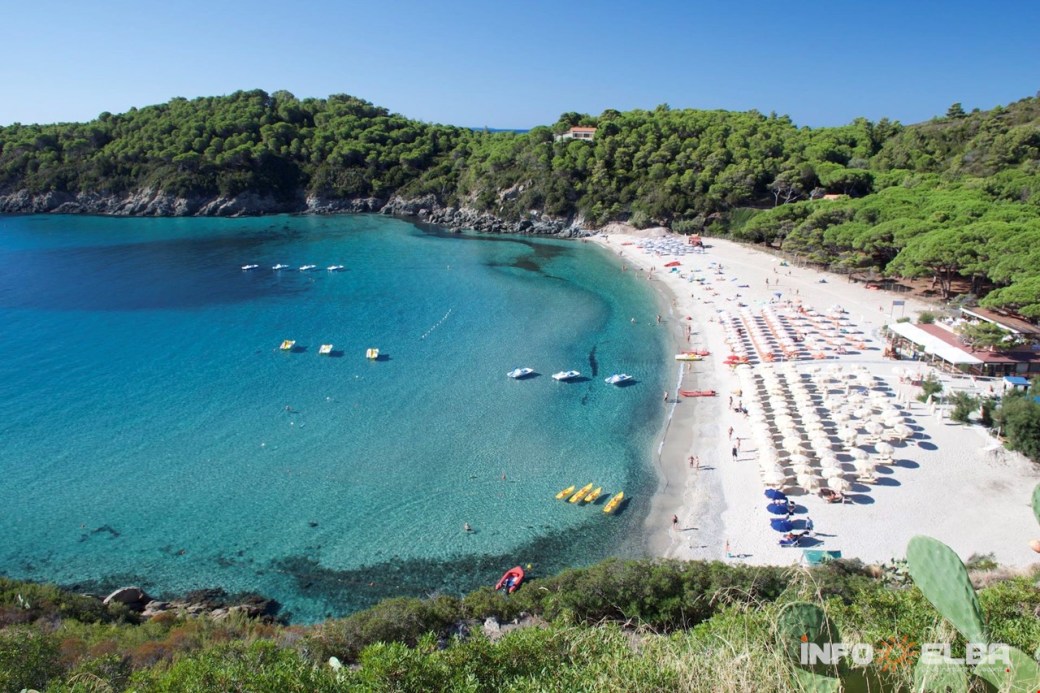 Fetovaia
Fetovaia Spiaggia di Galenzana
An enchanting sand and pebble beach, very quiet and peaceful, located near Marina di Campo, the Galenzana is the only beach on the entire island from which you cannot see the open sea, but only a strip of land. This is why it is always sheltered from almost all winds.
Cavoli Beach
This is one of the most famous, and in summer the most crowded, beaches on the entire island. It owes this success not only to the clarity of the sea and the beautiful beach but also to its particularly favorable microclimate. The beach faces south toward Monte Capanne, which protects it from northern winds, which is why it is popular from March until November. It is a long beach divided in two by a short cliff: to the east is the larger stretch, equipped with services and bathing establishments, while the stretch to the west is smaller and freer and is frequented by those who prefer more tranquility.
Here is a small guide to the most beautiful beaches and coves on this beautiful island, from the south going up north.
Cala dello Smeraldo
An attractive alternative for those who want to experience unrepeatable moments immersed in crystal-clear waters from which to admire the marine flora and fauna. The name emerald comes from the hypnotic colour of the sea that bathes the surrounding rocky shores.
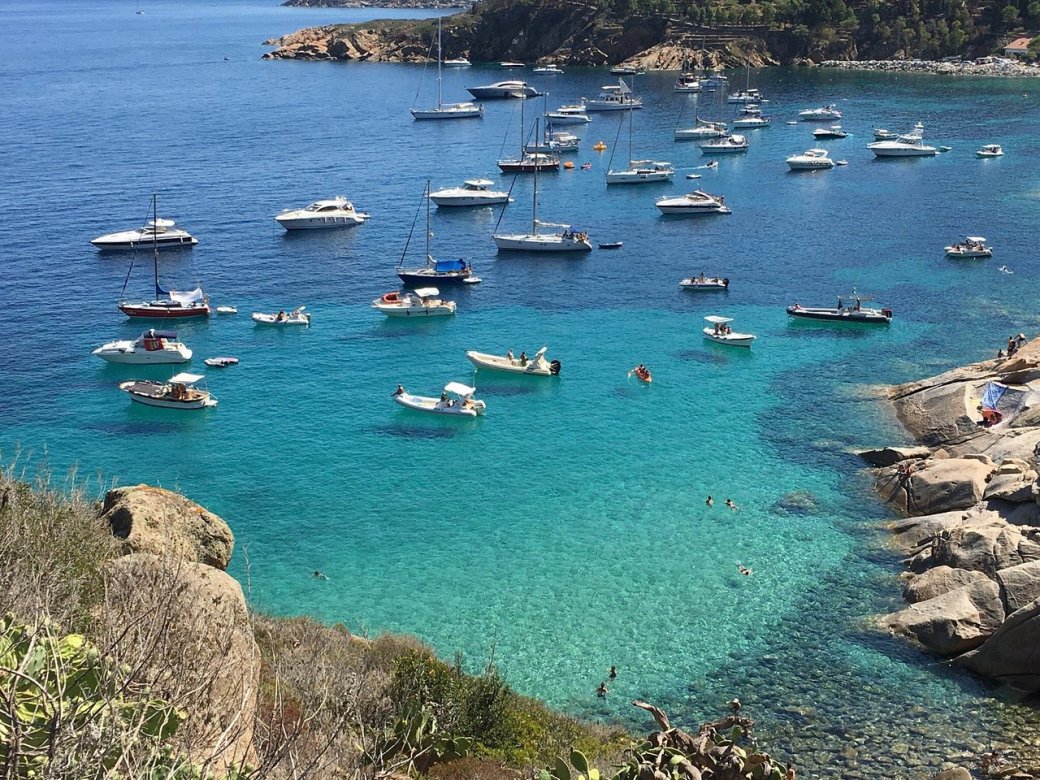 Cala dello Smeraldo
Cala dello SmeraldoCaldane Beach
A beautiful cove that is almost never overcrowded, characterized by a clear blue sea and fine, golden granite sand, this shallow-water beach is perfect for swimming and snorkeling enthusiasts. It can be reached in two ways: one by sea, through the service of boatmen available from Giglio Porto, and the other on foot, through a dirt path immersed in the Mediterranean maquis that starts from the nearby Cannelle beach.
Cannelle Beach
This is one of the largest beaches on the island and overlooks the beautiful view offered by Monte Argentario. It can be easily reached by car; in fact, there is a paid parking lot close to the beach, but the most enjoyable way is definitely the cab boat service of the boats that take you to the beach by sea. It is a beautiful beach and almost always quite crowded, but if you feel like taking a little walk among the rocks in a few minutes you can reach equally beautiful and less crowded coves, such as Cala dello Smeraldo and Capo Marino.
Spiaggia Arenella
Also known as Cala dell'Arenella, it is one of the most famous beaches on Giglio Island and is located between Punta Arenella and Cala Cupa. It can be reached both by land and by sea thanks to boats that leave hourly from Giglio Porto. Very fine, light-coloured sand and rocks that emerge as if by magic from the water, this beach boasts a crystal-clear sea, ideal for snorkelling, and thick vegetation that provides some shade during the hottest hours.
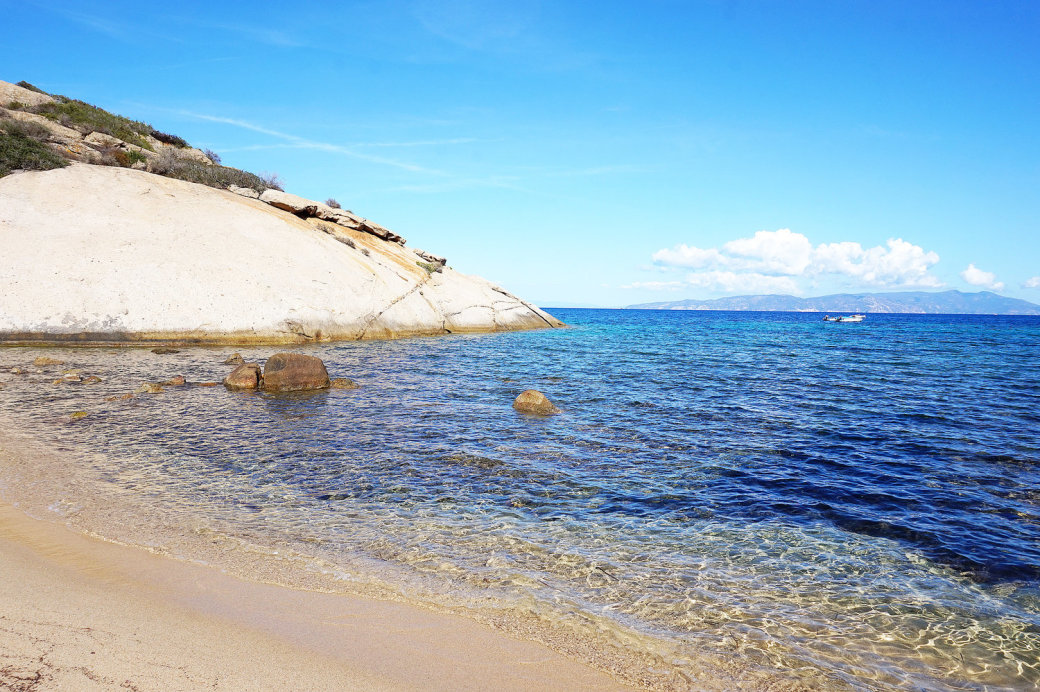 Cala Arenella
Cala ArenellaSpiaggia Petruso, Baia di Giglio Campese
So called because it is as small as a 'pertugio', the Petruso Beach is located on the left side of the Campese beach, offers wonderful seabed and can be reached by boat or on foot with a walk of about 10 minutes.
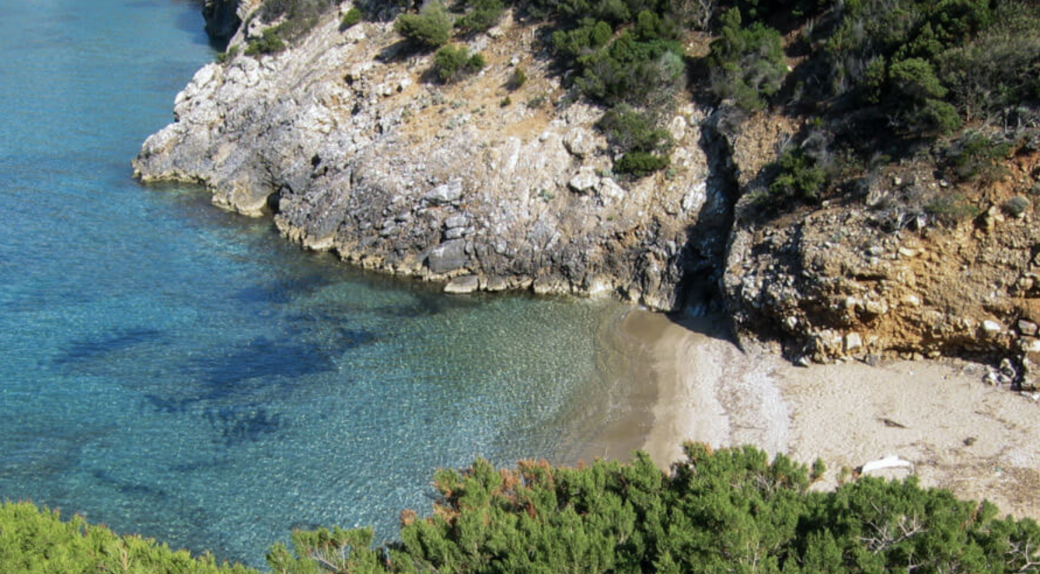 Spiaggia Petruso, Baia di Giglio Campese
Spiaggia Petruso, Baia di Giglio CampeseIsola di Capraia
Starting from the far south here is a selection of the most beautiful coves on this magnificent island, from southeast to west via the north coast.
Cala Rossa
Located at the southern tip of the island and accessible by boat, this incredible cove is the only one of volcanic origin in all of Capraia. Its name comes from the bright red color of the rock wall that drops sheer to the crystal blue sea. Dominating this beautiful beach is the Zenobito Tower, a 16th-century construction useful for defending the island from attacks by Saracen pirates.
Cala del Ceppo
This cove is located on the east coast of the island, is characterized by a clear sea whose rocky and sandy seabed is inhabited by many fish, especially Occhiate. To reach it you can choose boat or venture on a small 4-kilometer trek on a path from the center of the village.
Cala di San Francesco
A few minutes from the village, after the convent and the Church of St Anthony, a short path leads to the rocks of the Cala di San Francesco. Continuing towards the lighthouse, one also reaches a beautiful cliff ideal for sunbathing and swimming along the coast.
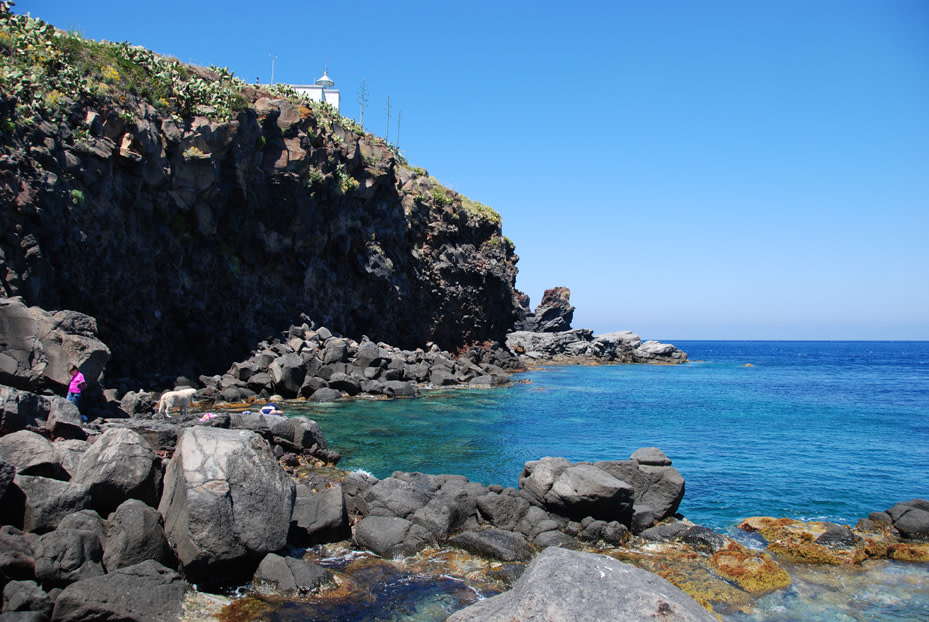 Cala San Francesco
Cala San FrancescoCala della Mortola
This is the only one of Giglio's beaches where a small sandy beach forms in the summer due to libeccio winds; the rest of the year it consists of pebbles instead. It is located northeast of the island and can only be reached by boat. Its name comes from myrtle, a plant that grows luxuriantly in this area along with the beautiful Stella Lily.
Cala del Reciso
There are several hypotheses about the origin of the name. The first is that one of the two natural arches was once 'severed', split in two by a rock that later collapsed. The second hypothesis on the origin of the name is a fissure in the left side of the cove, a real tunnel that leads to the nearby cove 'Seno della Peruccia', which can only be glimpsed when passing in front of it.
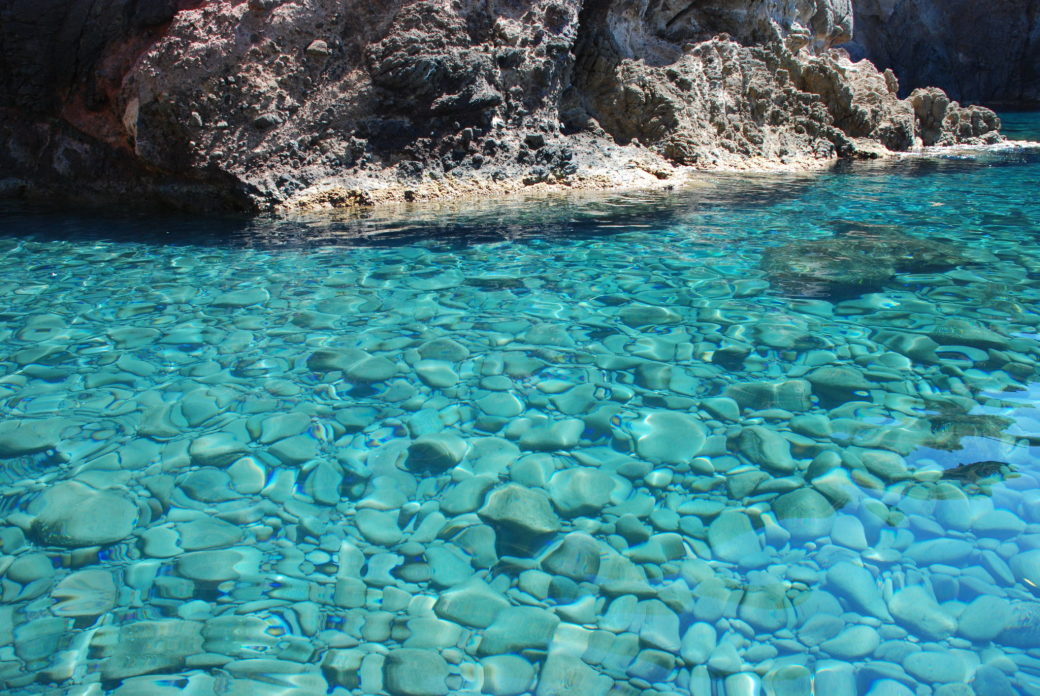 Cala del Reciso
Cala del Reciso









